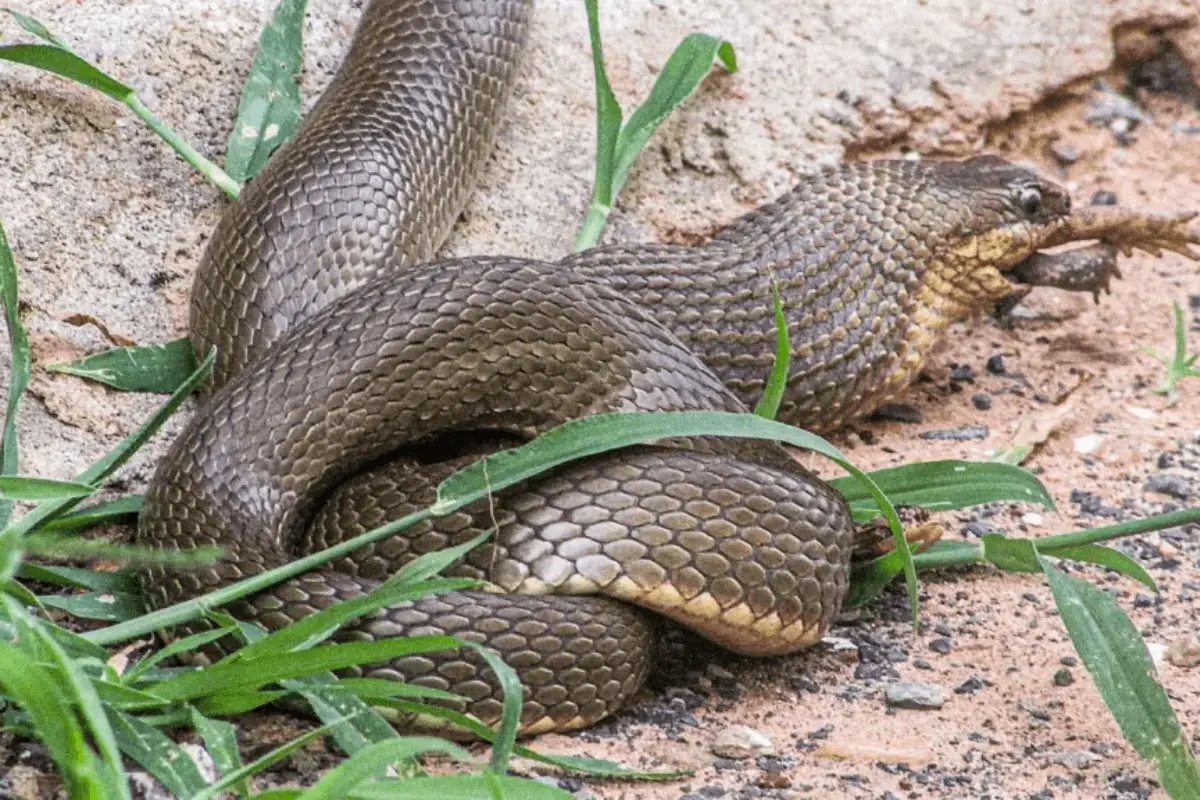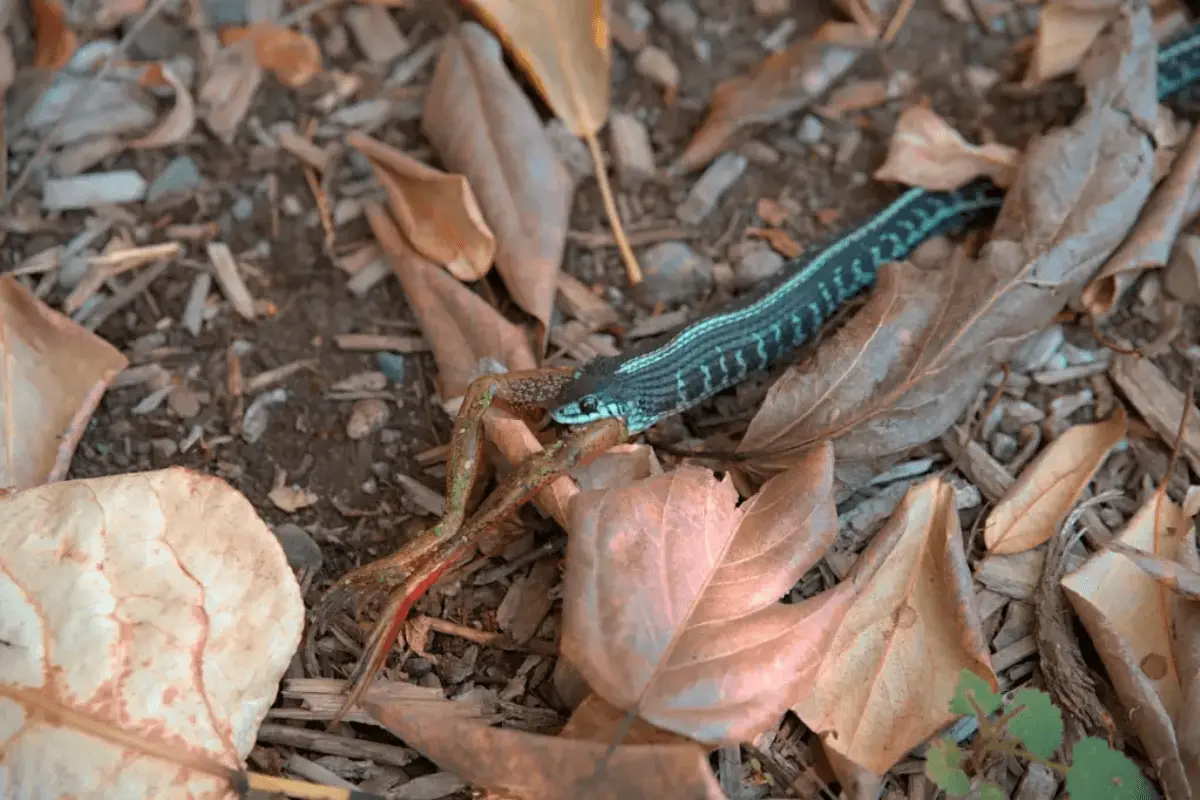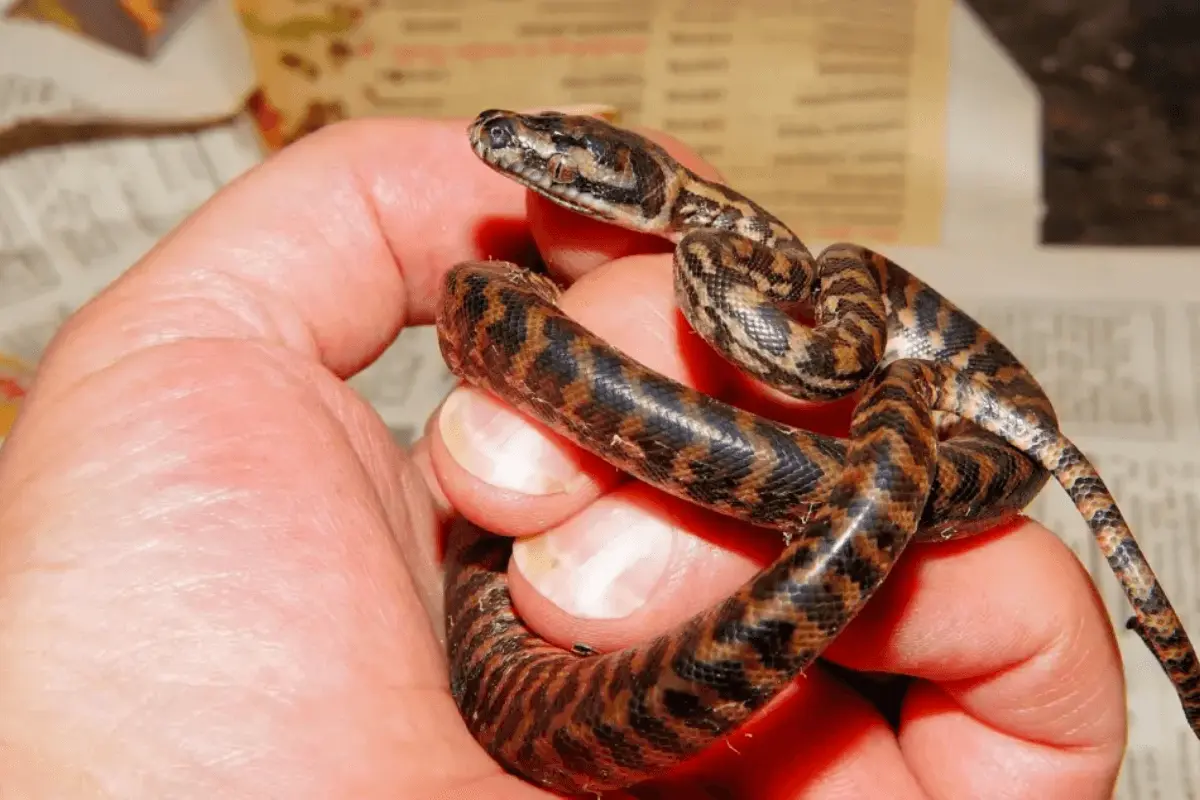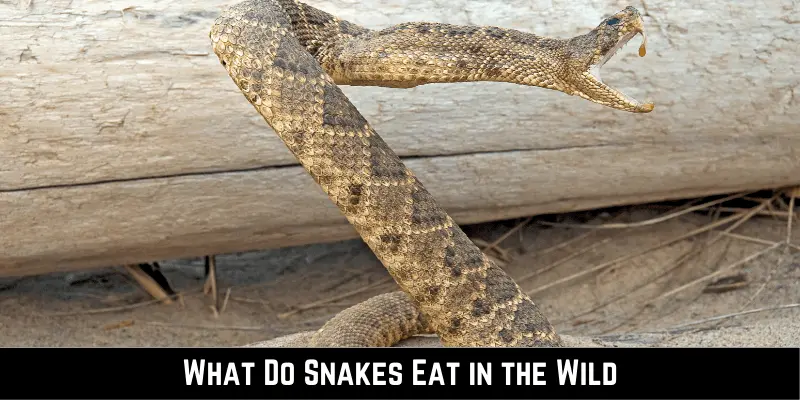The varied and interesting world of snakes gives us a fascinating look at what these interesting reptiles eat. Snakes come in more than 3,000 species, and they all eat different things and hunt in different ways. This shows how adaptable and tough they are in the wild. But what do snakes eat in the wild?
In the wild, snakes eat a wide range of things, but it mostly depends on the type of snake and where it lives. Here are some examples of what different kinds of snakes usually eat:
- Rodents (e.g., mice, rats)
- Birds and their eggs
- Insects
- Frogs and toads
- Lizards
- Fish
- Other snakes
In this blog, we’ll talk about the different things snakes eat in the wild, shedding light on how complicated their survival strategies are and how important they are to the balance of nature.
How Do Snakes Hunt For Food In the Wild?

The way snakes hunt for food in the wild can be pretty fascinating. They use various techniques, depending on their species and the type of prey they’re after. According to Ecol Evol, there are a few common strategies:
Ambush
Ambush predators like the Gaboon viper and the green tree python rely on their excellent camouflage to blend in with their surroundings. They remain motionless for long periods, waiting patiently for their prey to wander by. When the prey is within striking distance, the snake strikes with lightning-fast speed, precisely grabbing its meal. This energy-efficient method allows the snake to catch prey without too much effort.
Constriction
Constrictor snakes, such as pythons and boas, boast a seriously impressive hunting method that makes use of their strong, muscular bodies. These wrap themselves around their unsuspecting prey like a tight hug you’d rather not receive.
As the prey tries to take a breath, the snake squeezes even tighter, cutting off blood flow and leaving the poor victim gasping for air. Once the prey’s breathing stops, the snake slowly unwinds itself and gets ready for the main event – swallowing its meal whole, typically head-first.
Venomous Bites
Venomous snakes, such as rattlesnakes, cobras, and vipers, have unique venom glands and sharp fangs that let them deliver a poisonous bite. When they’re on the hunt, they quickly strike their prey and release venom, which might lead to paralysis, tissue damage, or even a fatal outcome.
After the venom does its job, the snake follows the prey’s scent trail and gulps it down whole. The strength of the venom differs among species, and some snakes even have venom specifically tailored for their favorite meals.
Chasing and Cornering
Certain snakes, like the coachwhip and the black racer, rely on their speed and agility to catch their prey. They actively pursue their target, using their keen senses to track it down. Once they’ve chased the prey into a corner or open area, they quickly snatch it up with their jaws. This hunting technique requires more energy but can be quite effective for fast-moving snakes.
The Different Types of Prey Snakes Eat In The Wild

Snakes eat many different kinds of animals in the wild to meet their nutritional needs. Here is a list of the different kinds of animals they eat:
Mice And Rats
Snakes like corn snakes and rat snakes primarily snack on mice and rats. These rodents are plentiful in various habitats, so they’re an easy-to-find and nutritious meal. Snakes use their sense of smell to track down and catch these little critters.
Small Mammals
Besides mice and rats, snakes also enjoy munching on other small mammals, such as rabbits, chipmunks, and squirrels. Big snakes, like boa constrictors, might even tackle larger mammals if the chance presents itself. These meals pack a punch with essential nutrients and energy needed for survival.
Birds
Tree-dwelling snakes or those near bird habitats often have birds on their menu. Species like tree boas and African boomslangs are bird lovers, nabbing unsuspecting birds perching or flying by. Birds provide a solid source of protein and energy.
Frogs And Toads
Some snakes, like garter snakes and hognose snakes, have a soft spot for amphibians such as frogs and toads. You’ll often find these snakes near water sources, where they can easily snag their prey, offering valuable nutrition.
Fish
Water-dwelling snakes, such as water moccasins and tentacled snakes, are pros at hunting fish. They’re fantastic swimmers with specialized techniques to catch their slippery meals, which serve up essential nutrients like omega-3 fatty acids.
Invertebrates
For many smaller snakes, like common garter snakes and ringneck snakes, invertebrates such as earthworms, slugs, and insects are the go-to grub. These critters are abundant and a piece of cake to catch, making them a staple in the snake’s diet.
Other Snakes
It’s survival of the fittest for some snakes, like king cobras and kingsnakes, which prey on other snakes, including little ones and juveniles. This behavior, known as ophiophagy, helps keep other snake populations in check and offers a rich source of nutrition for the predator.
Bats
A handful of snake species, like vine snakes and brown tree snakes, have acquired a taste for bats. These tree-living snakes have the unique ability to snatch bats mid-flight or while they’re roosting.
Lizards
Snakes such as milk snakes and California kingsnakes are fans of lizards. With lizards being plentiful in many habitats, they provide a nourishing meal for these snake species.
Bird And Reptile Eggs
Some snakes, like rat snakes and African egg-eating snakes, are known to gobble up bird and reptile eggs. They use their keen sense of smell to locate nests and swallow the eggs whole, making the most of this protein-packed food source.
What Do Snakes Eat As Pets?

When it comes to what pet snakes eat, it’s crucial to offer ’em a variety of grub that’s similar to what they’d find in the wild. Let’s dig deeper into some popular food picks for these slithery pets.
Chicken And Turkey
Although not a standard meal, some larger snake species, such as pythons and boas, might occasionally enjoy chicken or turkey. These meats can provide additional protein, but it’s crucial to remember that rodents are a more natural choice for most pet snakes.
Rabbits
Large snake species like boa constrictors and bigger pythons can benefit from consuming rabbits, as they offer essential nutrients and are a suitable size for these snakes. Feeding rabbits to smaller snake species is not recommended due to their size.
Gophers And Hamsters
Loads of snakes, especially constrictors, fancy chowing down on gophers and hamsters. These little critters are the same size as mice and rats, making them a great choice for many pet snakes. Just be sure to get ’em from reliable sources so you know they’re free of any pesky parasites or diseases.
Feeder Fish
For some slithery pals like garter snakes, feeder fish might be a tasty treat now and then. Not all snakes can handle fish too well, so knowing your snake’s diet preferences is essential. Make sure you get parasite-free fish that are safe for your snake buddy to eat.
Hedgehogs
Hedgehogs are not a typical snake food choice due to their spines. Some large snakes might try to eat hedgehogs, but it’s not recommended as a regular meal for your pet snake, as their spines can cause injury.
Snails
Some snakes, like the common garter snake, might munch on snails occasionally. But this ain’t a regular meal for most snakes, so ensuring the snails are clean and safe for your snake buddy to gobble up is essential.
Cockroaches
Cockroaches can be a suitable meal option for some small snakes. These insects can provide additional protein, but they shouldn’t be the primary food source for your pet snake. Order cockroaches from a reputable supplier to avoid any potential health issues.
Frogs And Polliwogs
Certain snake species, like garter snakes, prefer amphibians, such as frogs and polliwogs (tadpoles). If you plan to feed your snake amphibians, ensure they’re toxins-free and sourced from a reliable supplier. Amphibians should only be fed to snake species that consume them in the wild.
Beef and shrimp
Beef And Shrimp are not common food choices for snakes, as they don’t resemble their natural prey. It’s best to stick with more natural food options like rodents, fish, and amphibians, depending on your snake’s specific dietary needs
What Do Baby Snakes Eat?
Baby snakes or hatchlings, usually have a diet similar to adult snakes but with a little twist. Their meals consist of smaller-sized prey, making it easier for these little slithering creatures to swallow and digest.
Baby snakes in the wild often eat insects, small rodents like mice, small birds, and even eggs. Sometimes, they might try their other reptiles or amphibians, such as lizards and frogs. Surely, it all depends on the type of snake and what it can find in its natural environment.
Now, if you’re looking after a baby snake at home, you should feed it only pre-killed food, such as pinky mice, young mice that haven’t grown their fur yet.
Conclusion
To sum up, the fascinating world of snakes shows how many different kinds of food these fascinating animals eat. Snakes in the wild show amazing adaptability and toughness when finding a good meal. They eat everything from rodents and birds to insects and amphibians. As we’ve learned about their different ways of eating, we’ve come to respect their complex ways of staying alive and their important role in keeping nature’s balance.
FAQs
References
Siers SR, Yackel Adams AA, Reed RN. Behavioral differences following ingestion of large meals and consequences for management of a harmful invasive snake: A field experiment. Ecol Evol. 2018 Sep 5;8(20):10075-10093. doi: 10.1002/ece3.4480. PMID: 30397449; PMCID: PMC6206181.
